MP Board Solutions for Class 10 Science Chapter 7 – How do Organisms Reproduce?
MP Board Solutions for Class 10 Science Chapter 7 – How do Organisms Reproduce? are essential for understanding key Biology concepts in the MPBSE curriculum. These well-structured answers help students grasp topics like modes of reproduction, human reproductive system, and reproductive health. Designed as per the latest syllabus, these solutions strengthen conceptual clarity and improve exam preparation. Ideal for revision and practice, they encourage logical thinking and scientific understanding, making them a valuable study tool for scoring well in Class 10 Science exams.
MP Board Solutions For Class 10 Science – How Do Organisms Reproduce? – Exercise Images
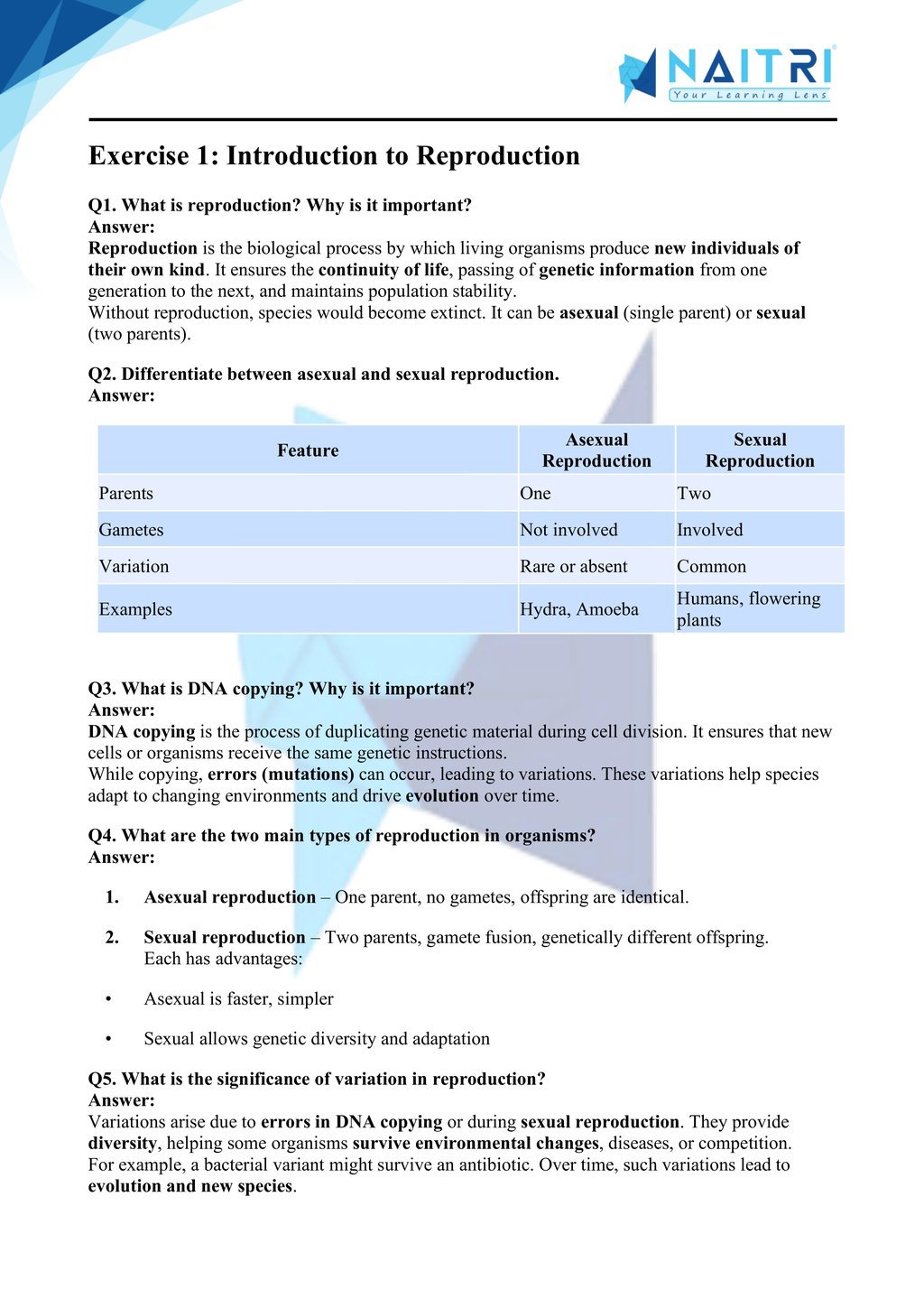
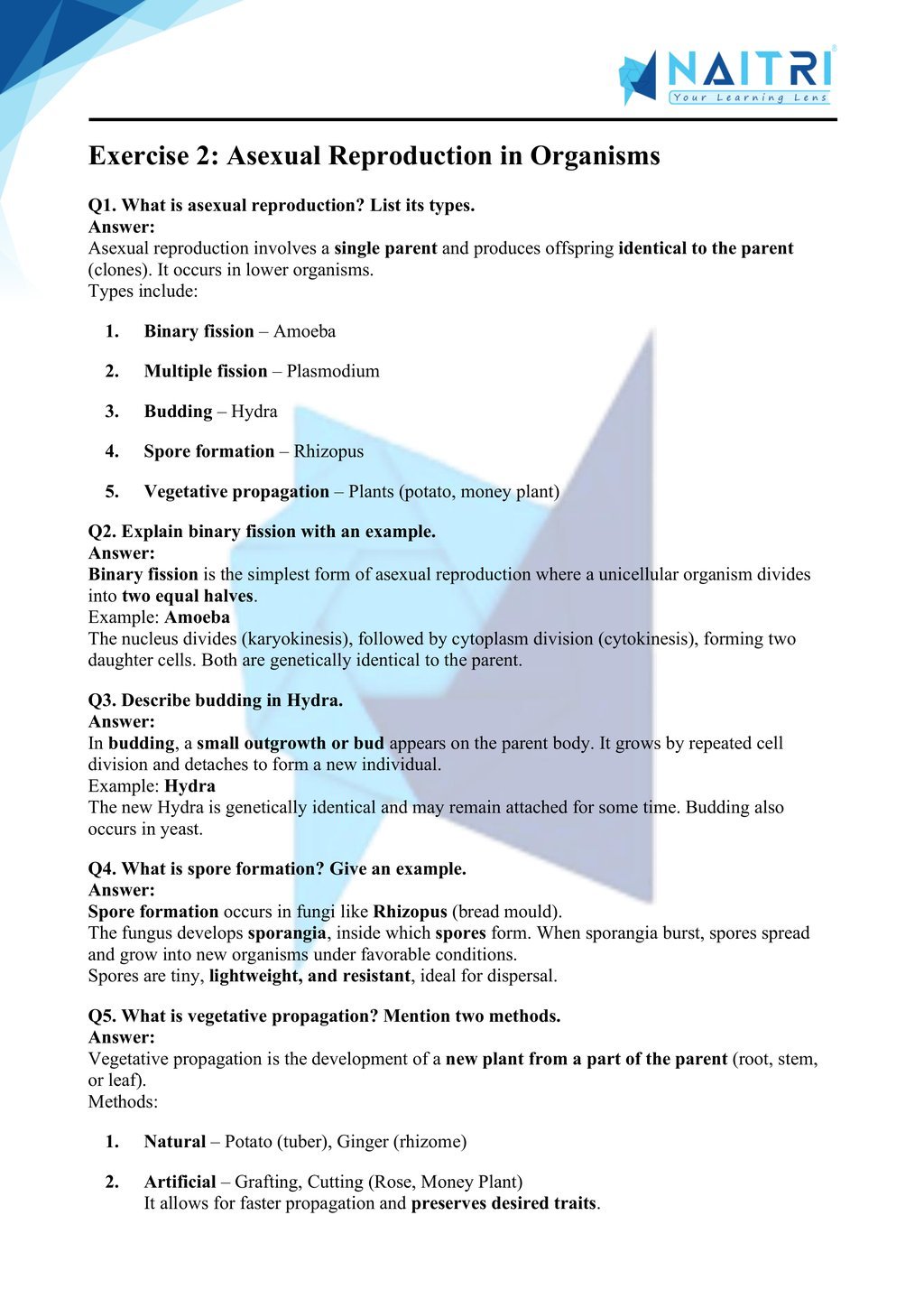
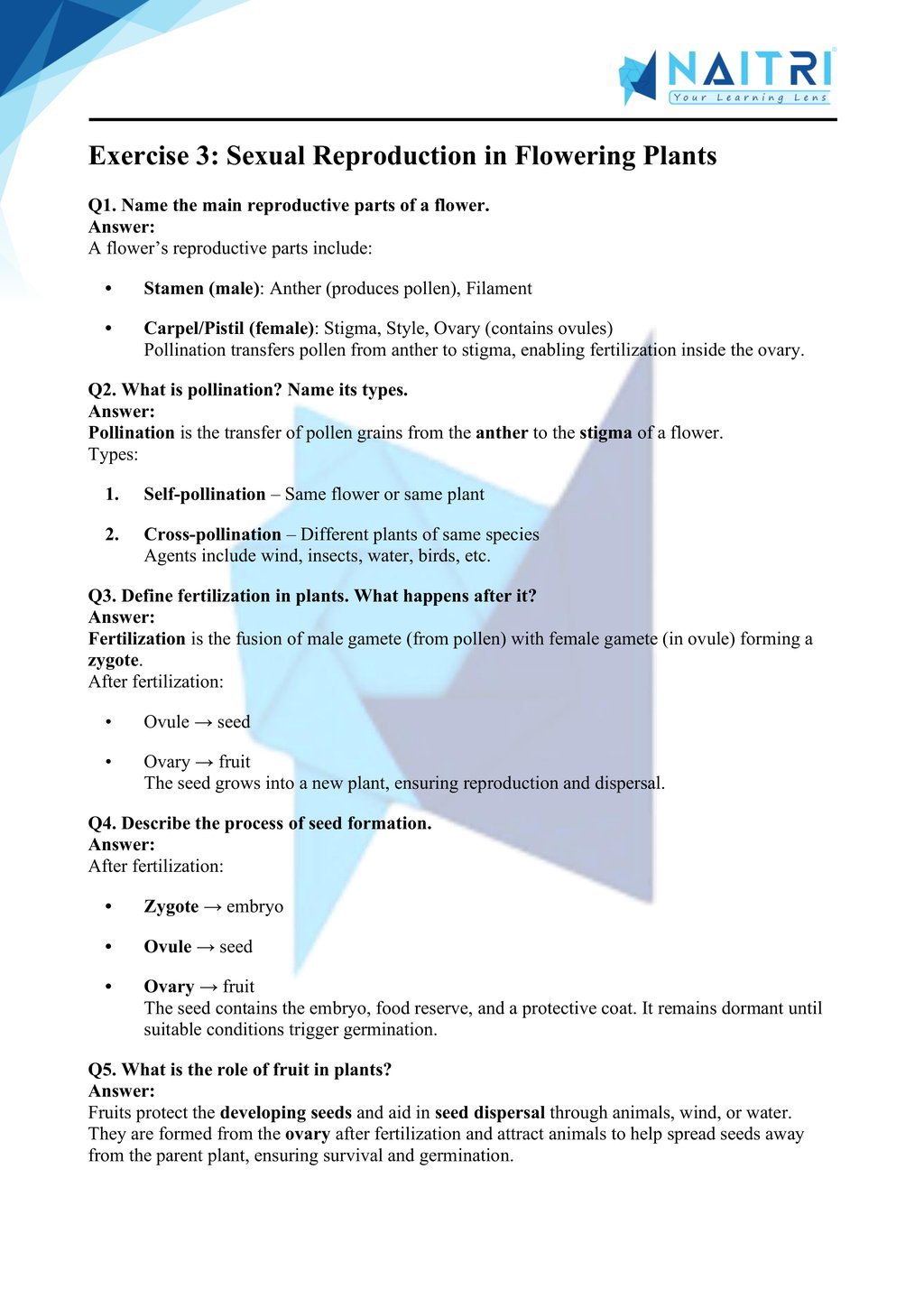
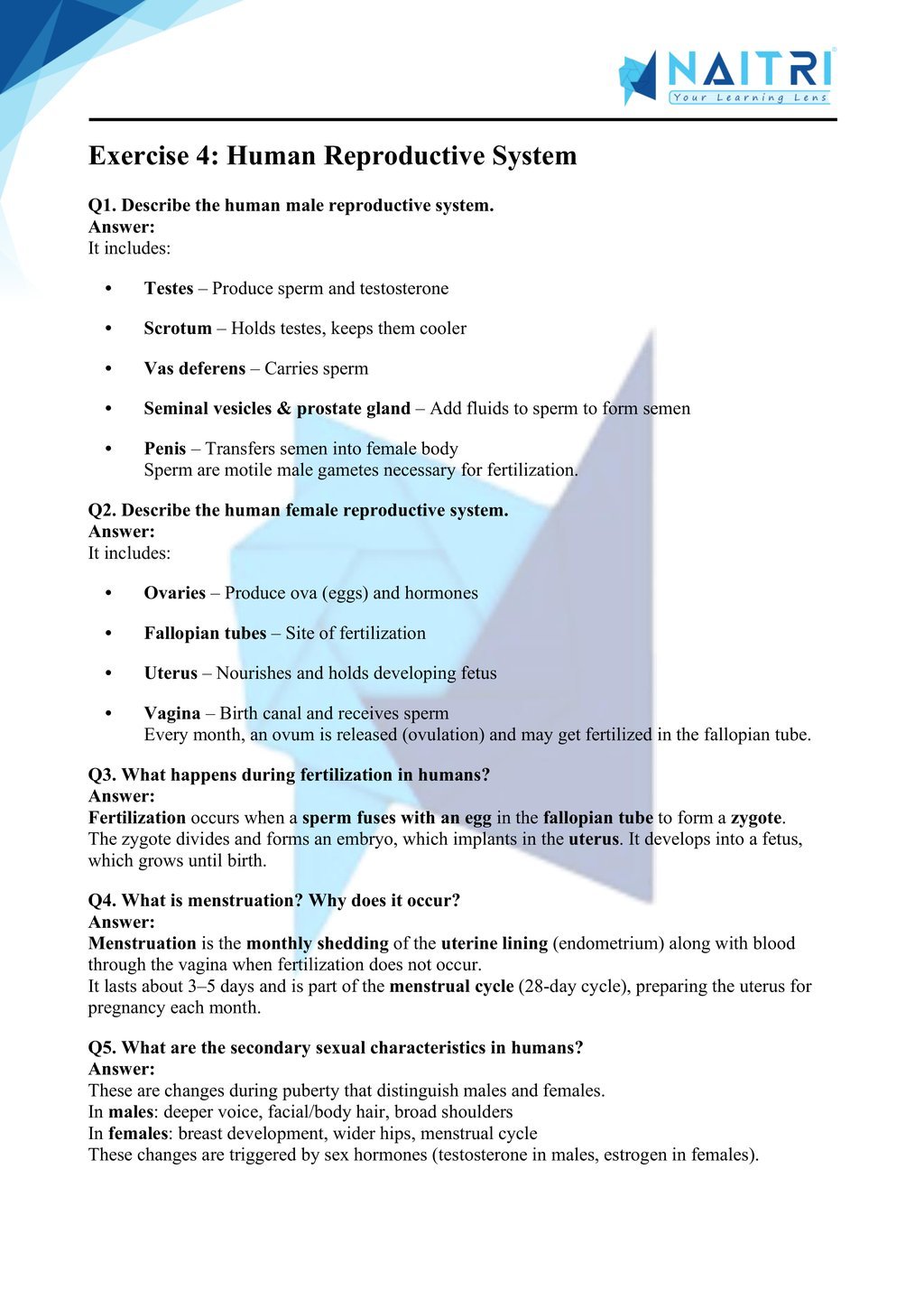
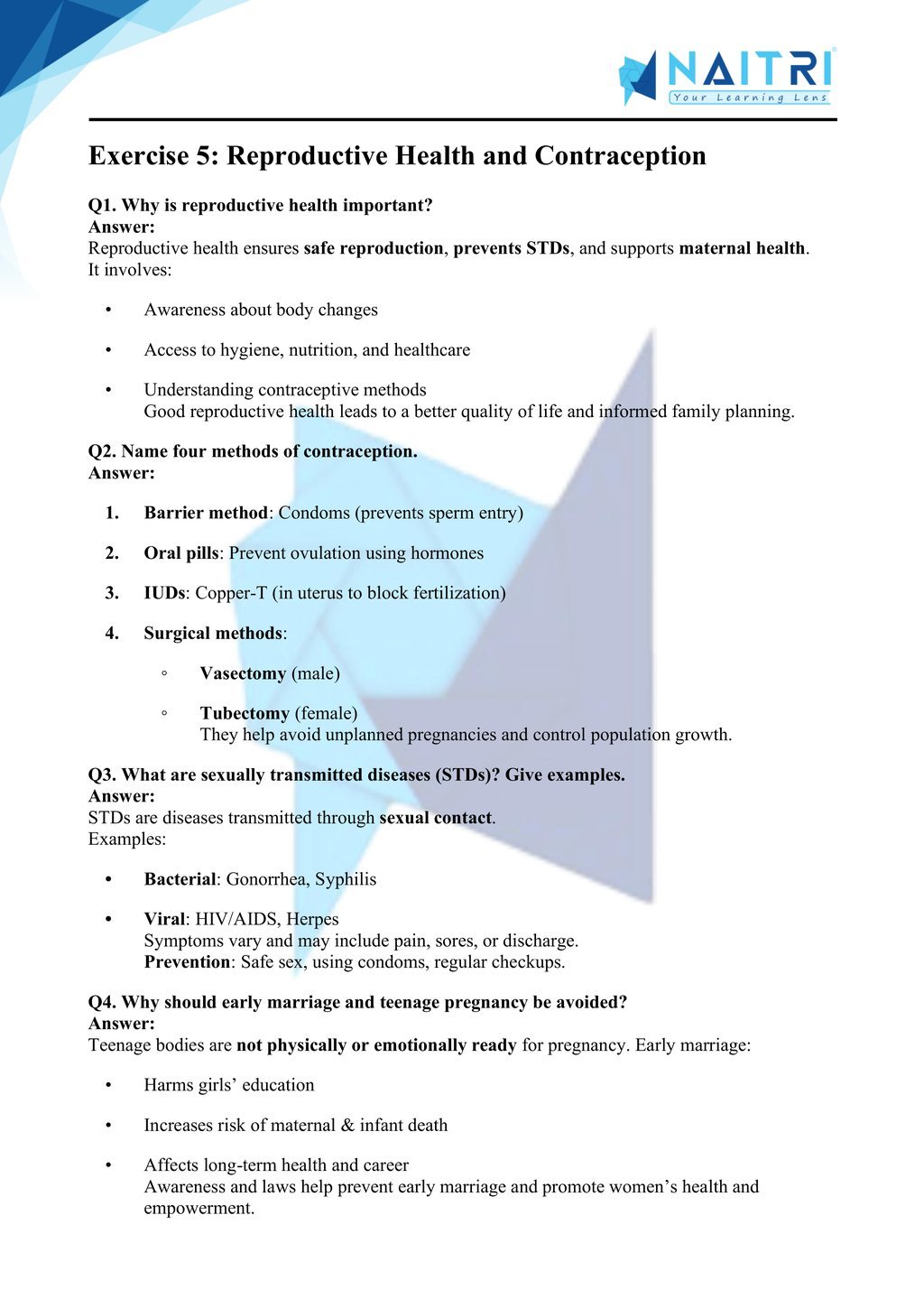

Experience Science Like Never Before – With AR!
Understanding How do Organisms Reproduce? is now more exciting and immersive! With the NAITRI App, you can explore complex science concepts through Augmented Reality (AR). See cells divide, reproduction methods vary, and life form anew — right in front of you. Our AR-powered lessons make learning interactive, 3D, and fun, helping you retain concepts better and enjoy every topic.



Visualize . Interact . Understand . The future of learning is here
How Do Organisms Reproduce? – Important Questions with Answers
1. What is reproduction? Why is it important?
Answer: Reproduction is the biological process by which organisms produce new individuals of the same species. It ensures survival, continuity of species, and transfer of genetic traits to future generations.
2. Differentiate between asexual and sexual reproduction.
Answer: Asexual reproduction involves one parent, producing genetically identical offspring (clones). Sexual reproduction requires two parents, combining gametes, resulting in genetically varied offspring, increasing adaptability and evolution.
3. Name two organisms that reproduce by binary fission and budding.
Answer: Binary fission – Amoeba and Paramecium. Budding – Hydra and Yeast. These are forms of asexual reproduction seen in unicellular and simple multicellular organisms.
4. Describe the process of binary fission in Amoeba.
Answer: In binary fission, the Amoeba’s nucleus divides into two, followed by cytoplasmic division, forming two identical daughter cells. It occurs under favorable conditions for fast multiplication.
5. What is fragmentation? Name one organism that reproduces this way.
Answer: Fragmentation is a form of asexual reproduction where an organism breaks into parts, and each grows into a new individual. Example: Spirogyra, a filamentous green alga.
6. Explain vegetative propagation with two examples.
Answer: Vegetative propagation is the asexual reproduction in plants using roots, stems, or leaves. Examples: Potato (stem tuber) and Bryophyllum (leaf buds), allowing faster and uniform reproduction.
7. What is spore formation? Mention its advantages.
Answer: Spore formation occurs in fungi like Rhizopus, where spores are produced in sporangia. Spores are light, can survive harsh conditions, and easily disperse for colonization.
8. Describe the structure of a flower with reproductive parts.
Answer: A flower has four main parts – sepals, petals, stamens (male), and carpels (female). Stamens contain anther and filament, while carpel has stigma, style, and ovary for reproduction.
9. What are unisexual and bisexual flowers? Give examples.
Answer: Unisexual flowers have either stamens or carpels (e.g., papaya, cucumber). Bisexual flowers contain both male and female reproductive parts (e.g., hibiscus, mustard), enabling self or cross-pollination.
10. Define pollination and explain its two types.
Answer: Pollination is the transfer of pollen from anther to stigma. Self-pollination occurs within the same flower. Cross-pollination occurs between flowers of the same species, promoting genetic diversity.
11. Describe the process of fertilization in plants.
Answer: Fertilization occurs when the male gamete from the pollen fuses with the egg in the ovule inside the ovary, forming a zygote that develops into a seed.
12. What changes occur in the flower after fertilization?
Answer: After fertilization, the ovary develops into fruit, ovules become seeds, petals and stamens fall off, and the zygote inside the ovule begins embryonic development.
13. Define germination and list its basic requirements.
Answer: Germination is the process where a seed develops into a new plant. It requires water, oxygen, suitable temperature, and sometimes light to initiate metabolic and growth activities.
14. What is puberty, and when does it occur?
Answer: Puberty is the stage when individuals develop secondary sexual characteristics and attain reproductive maturity. In humans, it generally begins between ages 10–14 in girls and 12–16 in boys.
15. Describe the male reproductive system in humans.
Answer: It includes testes (sperm production), vas deferens, seminal vesicles, prostate gland (fluid secretion), urethra (sperm passage), and penis (ejaculation and delivery of sperm during intercourse).
16. Describe the female reproductive system in humans.
Answer: It includes ovaries (egg production), fallopian tubes (fertilization site), uterus (embryo development), and vagina (receives sperm and serves as birth canal), all crucial for reproduction.
17. What are gametes? How are male and female gametes different?
Answer: Gametes are reproductive cells. Male gametes (sperms) are small, motile, and produced in large numbers. Female gametes (ova) are larger, non-motile, and fewer in number, containing stored nutrients.
18. Define fertilization and where it occurs in humans.
Answer: Fertilization is the fusion of male and female gametes to form a zygote. In humans, it takes place in the fallopian tube of the female reproductive system.
19. What is menstruation? Why does it occur?
Answer: Menstruation is the monthly shedding of the uterine lining and blood through the vagina when fertilization does not occur. It prepares the uterus monthly for possible pregnancy.
20. Describe the development of the embryo after fertilization.
Answer: After fertilization, the zygote undergoes cell division, travels to the uterus, and implants into the uterine wall. It develops into an embryo and then into a fetus over 9 months.
21. What is contraception? Name two methods.
Answer: Contraception is the prevention of pregnancy. Two methods include physical barrier (condom) and hormonal methods (oral pills), which prevent fertilization or implantation, ensuring reproductive control.
22. What are sexually transmitted diseases (STDs)? Name two.
Answer: STDs are infections spread by sexual contact. Examples include HIV/AIDS and syphilis. They affect reproductive organs and can lead to infertility or serious health issues if untreated.
23. How does reproduction contribute to evolution?
Answer: Reproduction creates variations through genetic recombination and mutation. Over generations, favorable variations accumulate, leading to evolution and adaptation of species to changing environments.
24. What are the advantages of sexual reproduction over asexual reproduction?
Answer: Sexual reproduction produces genetically diverse offspring, increasing adaptability and survival in varying environments. Asexual reproduction, though faster, produces clones with limited variation and adaptability.
25. Why is reproduction considered a characteristic of living organisms?
Answer: Reproduction ensures continuity of species by producing offspring. It distinguishes living from non-living entities and allows organisms to pass genetic information to future generations.
How do Organisms Reproduce? describes various modes of reproduction in living beings—from asexual methods like fission and budding to sexual reproduction in humans. It also covers reproductive health and contraception. This chapter is important for understanding continuity of life, genetic variation, and the biological basis of inheritance.
Related Chapters You May Like
Download Naitri App
Easy, Visual Learning — Right on Your Phone
Learn with Augmented Reality! The Naitri app makes CBSE and MP Board concepts interactive and fun — even in low-resource settings. Watch lessons, complete homework, take tests, and track progress — all in one place. Anytime. Anywhere.
Available on








